Sigma 50mm F1.2 DG DN | ART Review
Dustin Abbott
March 26th, 2024

A little over a year ago Sigma released their 50mm F1.4 DN ART lens, one that I was very happy to see from them. I gave it a very positive review here. But they weren’t done – just five or six weeks later they released the 50mm F2 DN lens, which I reviewed here. Flash forward to March of 2024, and we have a THIRD full frame Sigma 50mm release…all in less than a year. This is the premium option, however, in the form of the Sigma 50mm F1.2 DG DN| ART, coming to go head to head with Sony’s own 50mm F1.2 G Master lens. Sony’s 50mm F1.2 GM is amazing, but it also retails for $2000, leaving Sigma a lot of room to operate at the much lower price point of $1399 USD ($1899 CDN). But is the Sigma 50mm F1.2 DN worth considering over either the Sony 50mm F1.2 (or excellent F1.4 G Master) lenses, or even Sigma’s own 50mm F1.4 DN? Explore that idea with me in either my video review below or by reading on.
Follow Me @ YouTube | Patreon | Instagram | Facebook | DA Merchandise | Flickr | 500px | X
Thanks to Sigma Canada (Gentec) for sending me a review loaner of this lens. As always, this is a completely independent review. *The tests and most of the photos that I share as a part of my review cycle have been done with the Sony a7RV along with the Sony Alpha 1 that serve as my benchmark cameras for Sony lenses.
__________________________________________________________________________________________________
One of Sigma’s first dedicated full frame DN (mirrorless) designs was their 35mm F1.2 DG DN | ART. I reviewed that lens 5 1/2 years ago, and, while it was optically amazing, it was also HUGE. It was over 136mm long (5.4″) and weighed a whopping 1090g (38.4oz). Many reviewers felt about like I did about it; they loved the images they could with it, but weren’t sure that they were willing to deal with the size and weight. I ended up buying the wonderful (and compact) Sony 35mm F1.4 GM when it came out instead.

But Sigma has really learned to prioritize cutting down the size where necessary on mirrorless, and the new 50mm F1.2 DN is much more moderate in size. It is 81mm in diameter (with a 72mm front filter thread size) and 110.8mm in length (3.2 x 4.4″). It weighs a much more moderate 740g (26.1oz). These measurements are for the Sony E-mount version (which I’m testing here), but the L mount specs are similar. That makes this lens much more similar to the Sigma 50mm F1.4 DN (78.2 x 109.5mm | 670g) than the mammoth 35mm F1.2 DN, which is 28mm longer and 345g heavier. It is very similar in size to the Sony FE 50mm F1.2 G Master, which is 87 x 108 mm and weighs 778g. That means the Sigma is just slightly longer but a fair bit narrower and actually weighs 38g less. Kudos to keeping this beast reasonably sized. I don’t have the 50mm F1.2 GM on hand, but I do own the 50mm F1.4 GM, which you can see is smaller but not dramatically so.
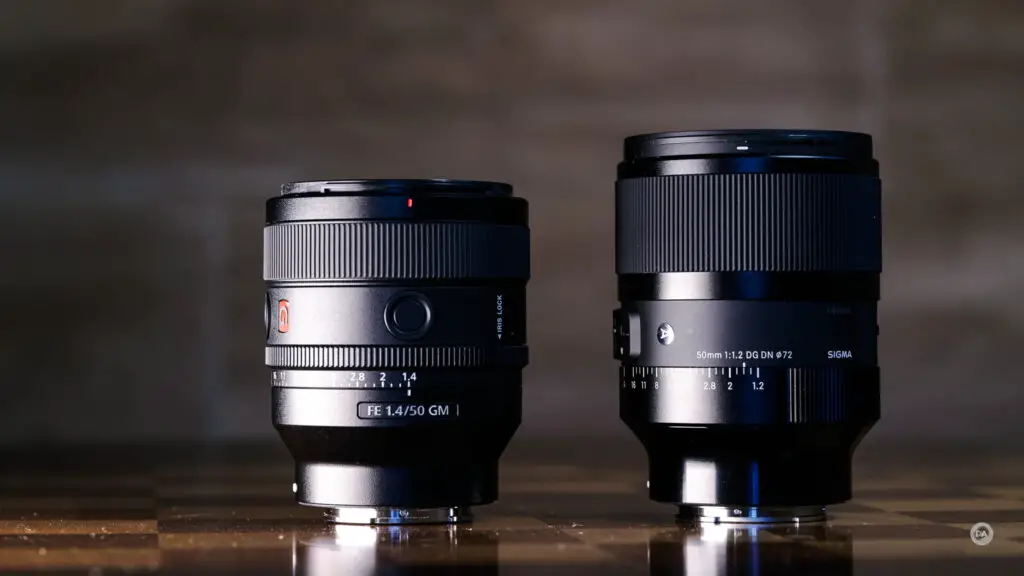
The Sigma 50mm F1.2 DN brings all of Sigma’s latest technologies and features together to produce a GM fighter, and the lens is (as expected) incredibly sharp as well…even at F1.2

Let’s take a deeper dive into everything together.
Build and Handling
Sigma divides its lenses into three different categories: Contemporary, Art, and Sport. The Contemporary lineup gets the lowest level of build and weather sealing, while the lines are a little more blurred with the Art and Sport lenses. This ART lens is very nice built, and has a “Dust and Splash resistant structure” in the form of a gasket at the lens mount, internal seals, and a water and oil repellant coating on the front element.

As per usual with the ART series, Sigma provides a nice padded nylon case along with a quality lens hood. The lens hood has different textures to it along with a locking mechanism. Sigma does go the extra mile in the presentation of their lenses, and they are proud that their products continue to be fully assembled in Japan.
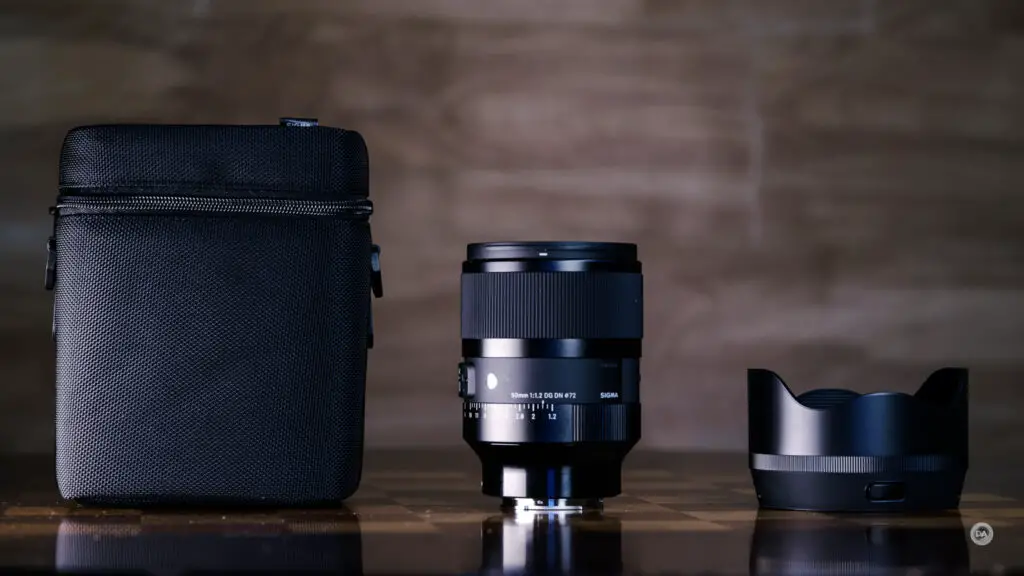
The 50mm F1.2 DN has Sigma’s unique approach to aperture, which includes several features. This includes an aperture ring with the option of using the “clicked” version (with one-third stop detents) or, with the flip of a switch, a fully declicked version that will allow for aperture racking for video. One unique Sigma feature is an aperture lock switch, which you can engage either in the manual aperture portion (this will keep you from inadvertently sliding into “A” [Auto] position, particularly important if doing aperture racks), or you can engage it when you are Auto aperture mode to make you that you don’t inadvertently bump the ring and change the aperture without noticing. Sony has since copied this feature, which they call “Iris lock”.
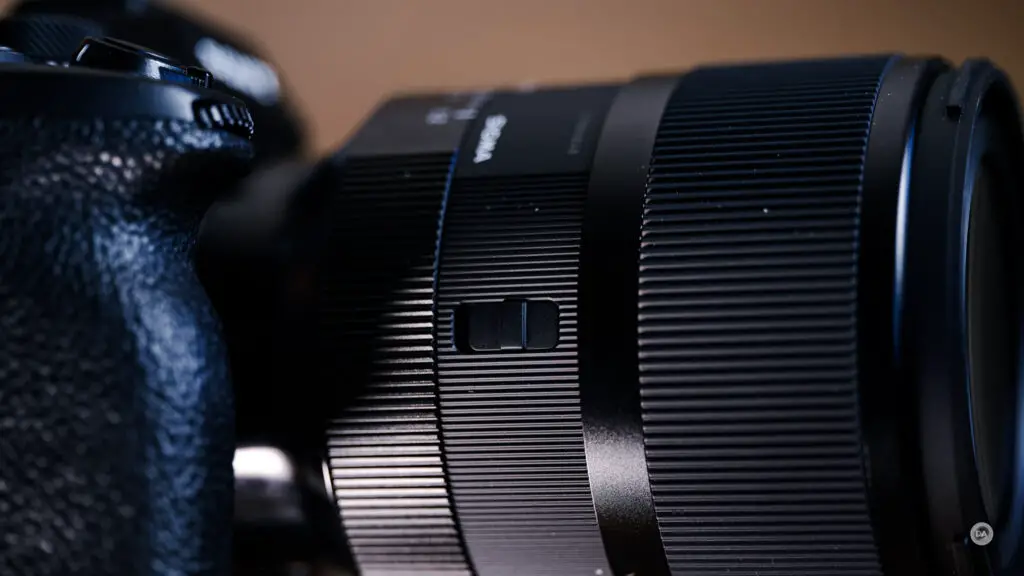
This really gives users the best of all worlds, as for those who don’t like an aperture ring, you can use the lock and just control the aperture from within the camera (or allow the camera to control aperture) without being concerned about an inadvertent bump of the ring. You can use the manual aperture ring with clicks (my personal preference), or declick it if preferred (typically for video work, to allow for aperture racking).
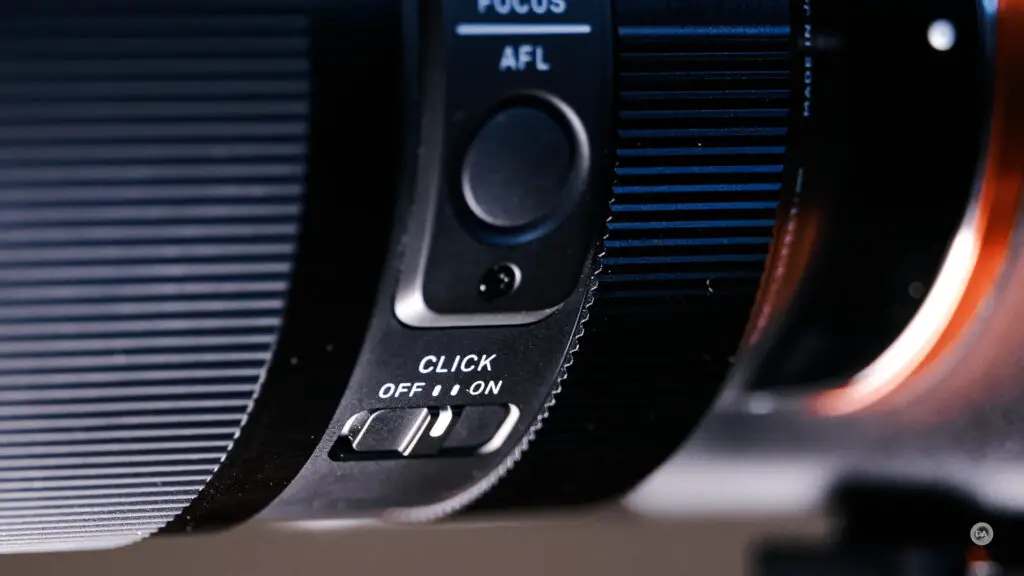

The aperture iris itself features an extremely high 13 blade count, which makes for an extremely circular shape as the lens is stopped down.
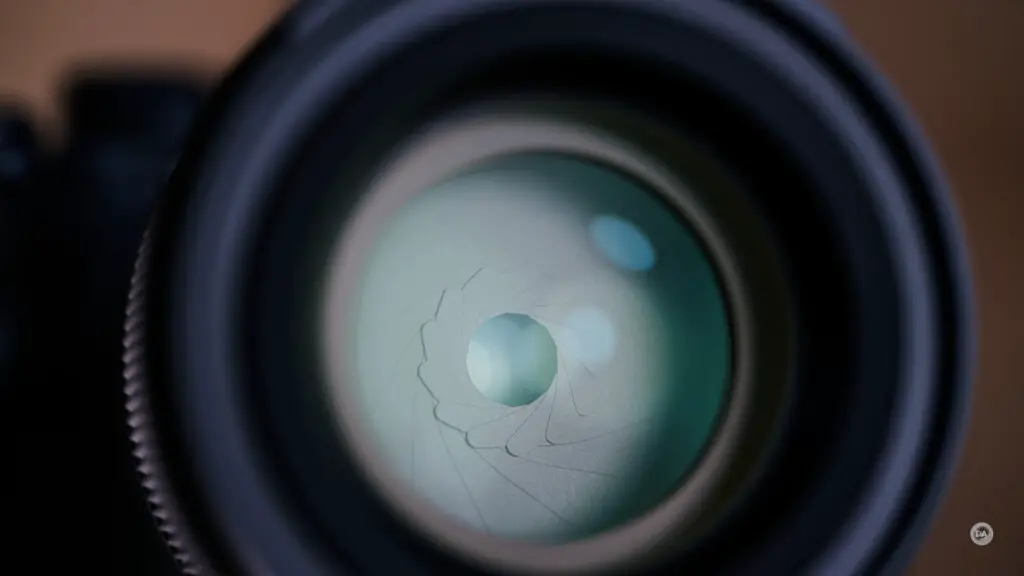
When stopped down, this also makes for an interesting (if a bit busy) 26 bladed sunstar/sunburst effect.

The 50mm F1.4 DN also sports an AF/MF switch and a custom/focus hold button which you can program to various functions in the camera, though it should be noted that the G Master 50mm lenses both sport dual custom buttons.
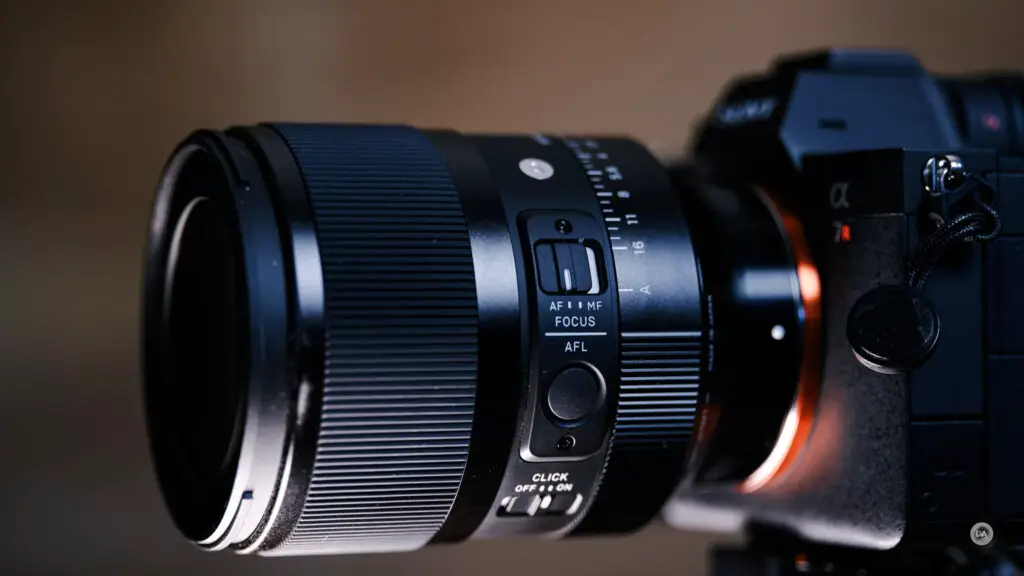
The manual focus ring is nice and wide, deeply ribbed, and is really nicely damped. The action feels heavier than the GM lenses, but more precise, too. The high power of the focus motor means that there is no latency when you manually focus (mirrorless lenses operate on a “focus by wire” arrangement rather than a direct mechanical coupling to the focus elements). Manual focus action is very nice and feels pretty close to the real thing. If you are using the Leica L version of the lens and the USB dock, you can tweak the behavior of the focus ring between linear focus and non-linear focus.
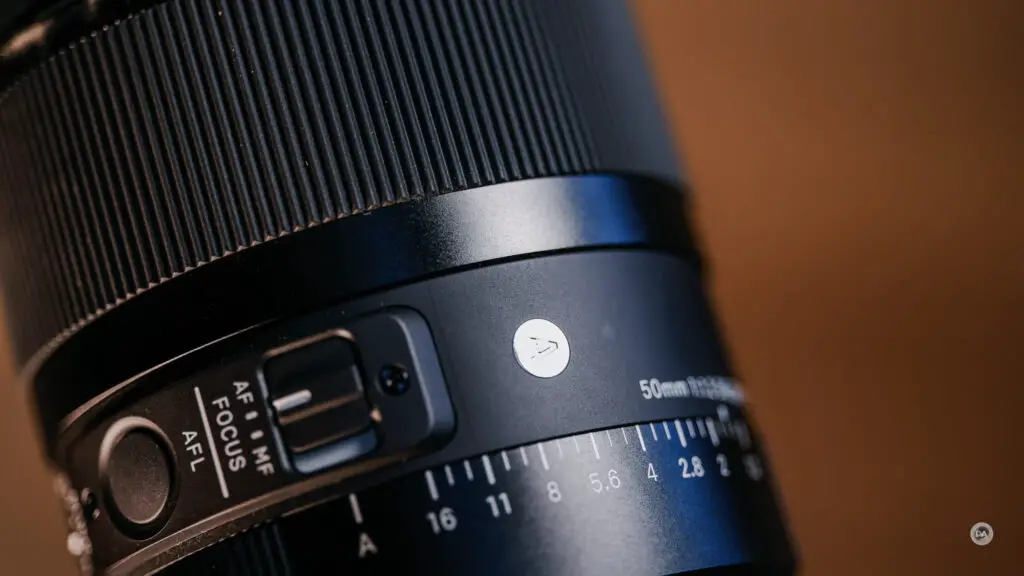
The build quality feels very nice here, roughly on par with the much more expensive G Master. It’s a great mix of nice materials, including some metal alloys and engineered plastics, and Sigma has long been good at using different textures as a means of keeping their lenses from being “boring” even though there are essentially no accent colors in use here.
The minimum focus distance is 40cm (15.8″), which is 5cm (2″) closer than the 50mm F1.4 DN, which results in a 0.16x magnification figure, just slightly lower than the GM’s 0.17x magnification figure. Up close performance is very strong, with good contrast and detail even at F1.2.

This opens up the possibility of some nice shallow depth of field shots with beautifully blurred backgrounds.

I’m perfectly happy with the build and feature set of this new 50mm F1.2 DN lens. The size and weight are tolerable, and Sigma has delivered a feature set that is pretty comparable to the G Master lens but at a much lower price point. That’s almost certainly going to be a winning combination.
Autofocus and Video
Last year Sigma debuted their new HLA (High-response Linear Actuator) focus motor, which is a definite improvement over the stepping motors Sigma has used in the past on their mirrorless lenses. This is a high powered linear motor which is more powerful and has the necessary torque for rapid focus changes even with the heavy glass elements in a large aperture lens like this. Sigma has employed two HLA focus motors in the 50mm F1.2 DN – one for each of the focusing groups in the optical design. And you can definitely feel the speed, as there is little hesitation when making focus changes and instead focus is essentially where you need it be near instantaneously.

Autofocus speed is definitely nice and snappy, with near instant transitions from one focus point to another whether indoors or out of doors, aided indoors by that big F1.2 aperture. Focus is quiet and smooth. Now, to be fair, Sony packs a whopping 4! XD linear motors into their 50mm F1.2 GM, so when push comes to shove, that lens is still going to be the lens of choice if you happen to shoot sports, particularly since Sony limits the burst speed of their top sports cameras with non-Sony lenses. Maximum burst speed with this Sigma on my Alpha 1 is 15FPS, whereas I can get 30FPS with my GM lens. Frankly, however, that probably isn’t going to be major factor with many photographers, as people rarely use a 50mm F1.2 for sports!
What the lens definitely provided was precision focus. I shot this hanging piece of bark on a tree, and you can see just how precise focus is here.

The most common application of a lens like this will be portrait and fine art work, and the AF system works beautifully for that. Look how perfect the focus on Nala’s iris is even at F1.2:


I was able to nail focus easily even at F1.2 on very narrow subjects, like this nail sticking out of some old barn board.

I shot a portrait session with the lens and had an effortless time tracking the eye of my subject. I got consistently good focus results, though, as always, you may need to stop the lens down to get enough depth of field to have more than a sliver of your subject in focus.



The upside to this is that you can shoot full length portraits and still have some separation from the background.

Video focus pulls are smooth and fast, with no hesitation, pulsing, or settling. I also saw smooth, confident focus transitions when I put my hand in front of the lens and then allowed focus to transition back to my eyes. Sigma has worked at reducing focus breathing in the 50mm F1.2 DN, and it shows in a stronger performance than what I saw on the 50mm F1.4 DN.

Sigma has given this lens their best autofocus technology, which makes it a very strong choice that can hold up to basically all types of photography.
Image Quality Breakdown
Sigma has done a pretty remarkable job as a third party lensmaker in that people expect a new Sigma release (particularly an ART prime release) to automatically be a very high performing lens. Their 50mm F1.4 DN proved an extremely sharp lens, as was their 50mm F2 DN lens, but you can see here than over most of the frame the 50mm F1.2 is sharper still.
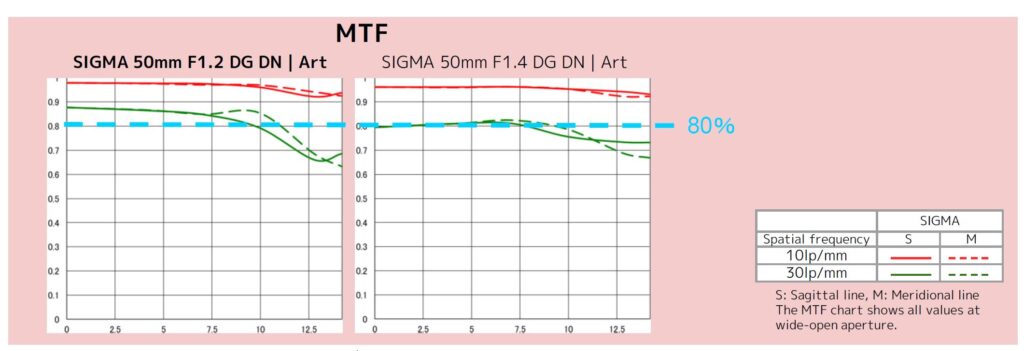
The optical design is 17 elements in 12 groups, with 4 of those being aspherical elements. As is usual with Sigma designs, there is very high correction of aberrations, so the sharpness and contrast wide open is very strong.
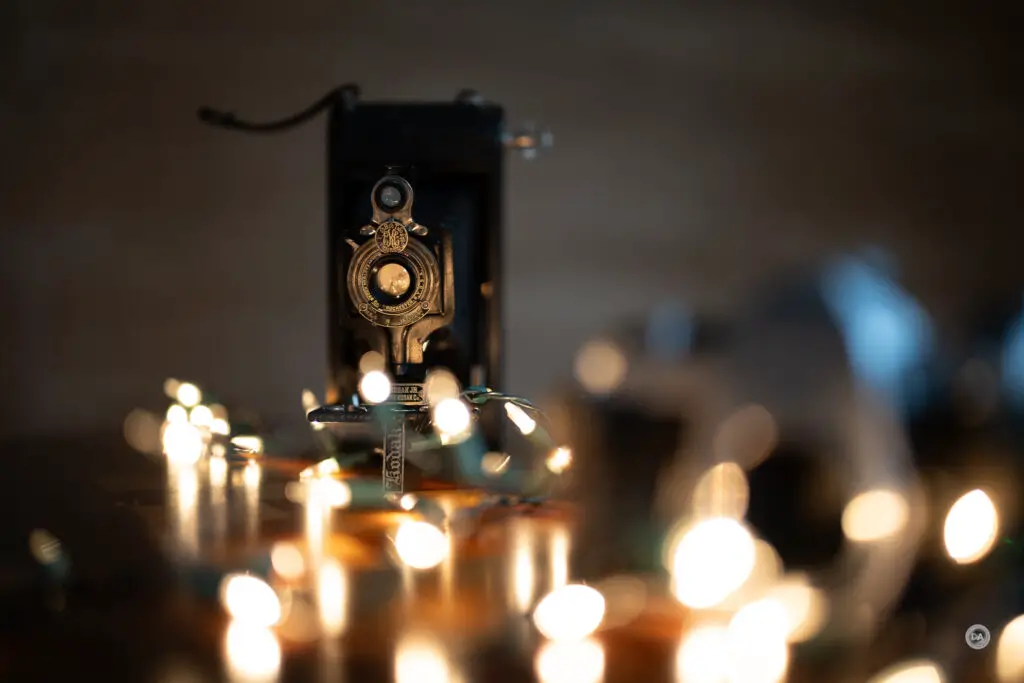

We’ll break down the performance by first taking a look at distortion and vignette.

Distortion is quite well controlled here, and vignette isn’t severe. While there is a correction profile available, I like to do manual correction so that I can see what the actual optical performance is. I used a minor -4 to correct just a bit of pincushion distortion and a +65 (a little over two stops) to correct for the vignette.
This is definitely an area of strength relative to the 50mm F1.4, which required a -8 to correct for distortion (significantly more) and a +84 to correct for the vignette (more like 3 stops).
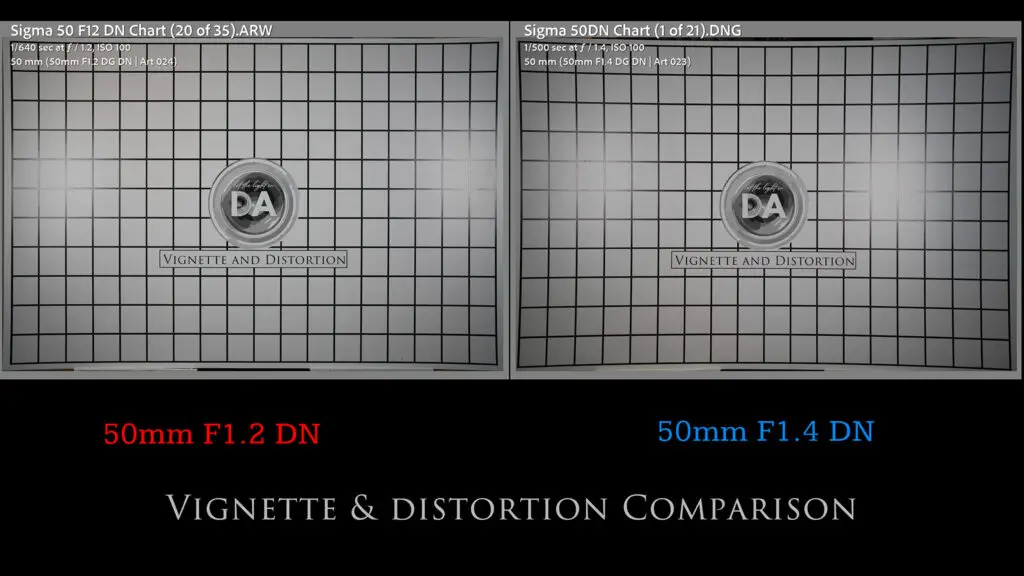
That’s an impressive win for the 50mm F1.2 DN, as it isn’t hardly any bigger, has a brighter maximum aperture, and yet manages to cut down on both these things.
It’s also better in controlling real world longitudinal chromatic aberrations. The 50mm F1.4 DN did pretty well in my controlled tests, but there were a number of real world shots where I was surprised at how much fringing I saw, as this is something that Sigma typically controls very well. They are back to their winning ways here, though. I was consistently impressed in real world scenarios where I would expect fringing and find very little…even at F1.2:
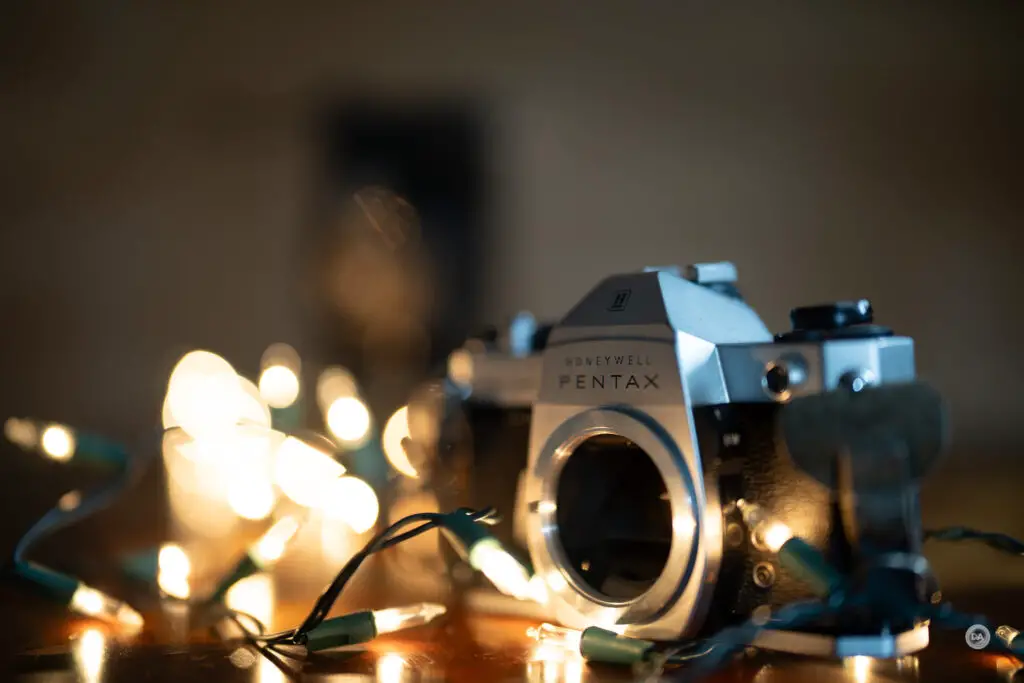

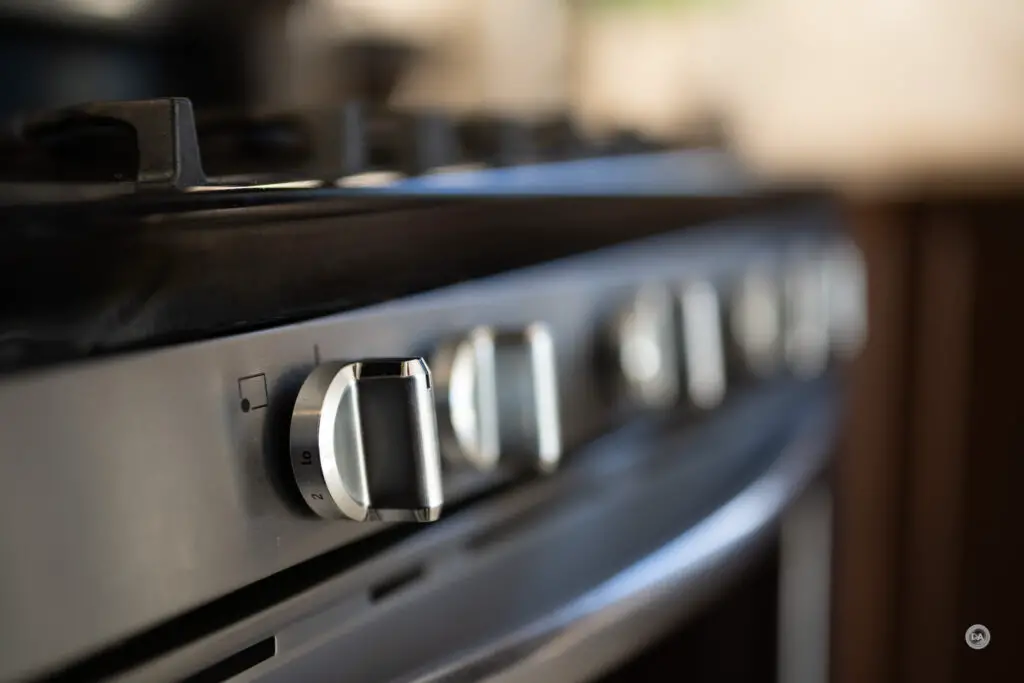
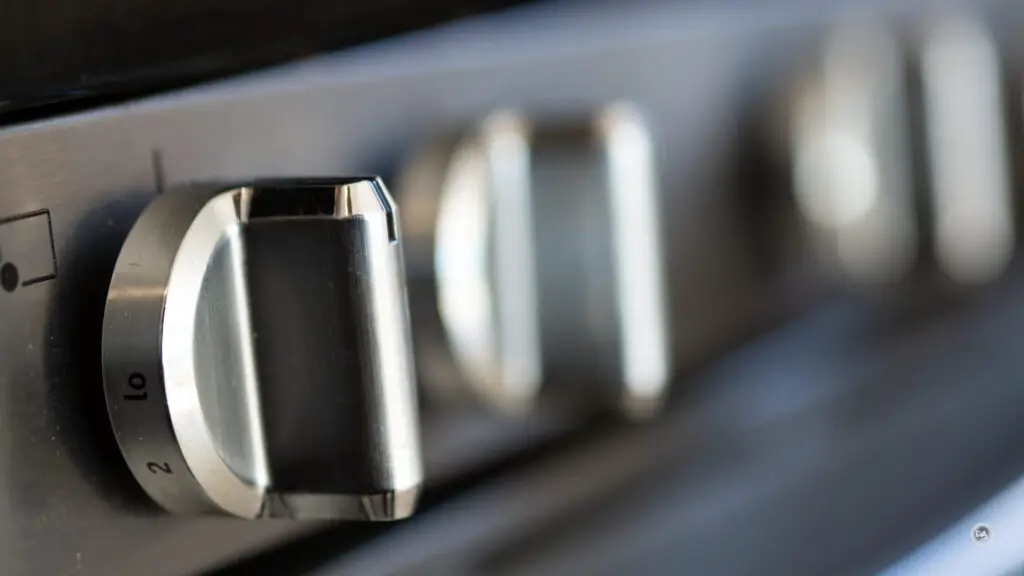


I also see very little lateral chromatic aberrations near the corners:
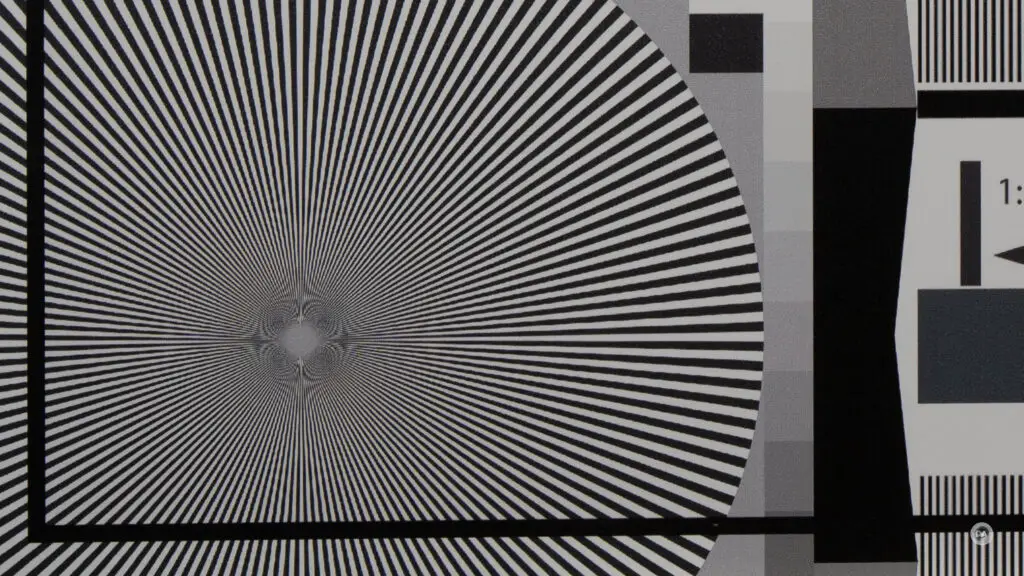
So far all is well. So how about sharpness? All of the tests and photos shown in this review are done on the 61MP Sony a7RV, the highest resolution point currently available for a full frame/35mm sensor. Here’s a look at the test chart we’re using for the tests.

We’ll start by taking a look at crops from across the frame at F1.2 (center, mid-frame, lower right corner):
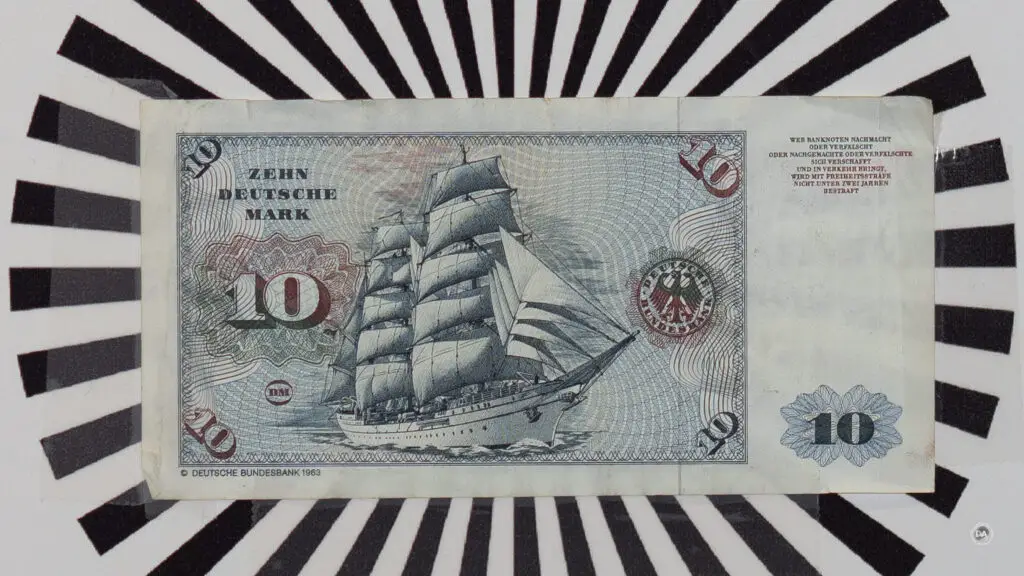


We can see that not only is there impressive sharpness in the center of the frame, but also a nicely even sharpness profile all across the frame.
To put this into perspective, let’s take a look at the Sigma 50mm F1.2 DN at 200% magnification in the center and extreme corner at F1.2:
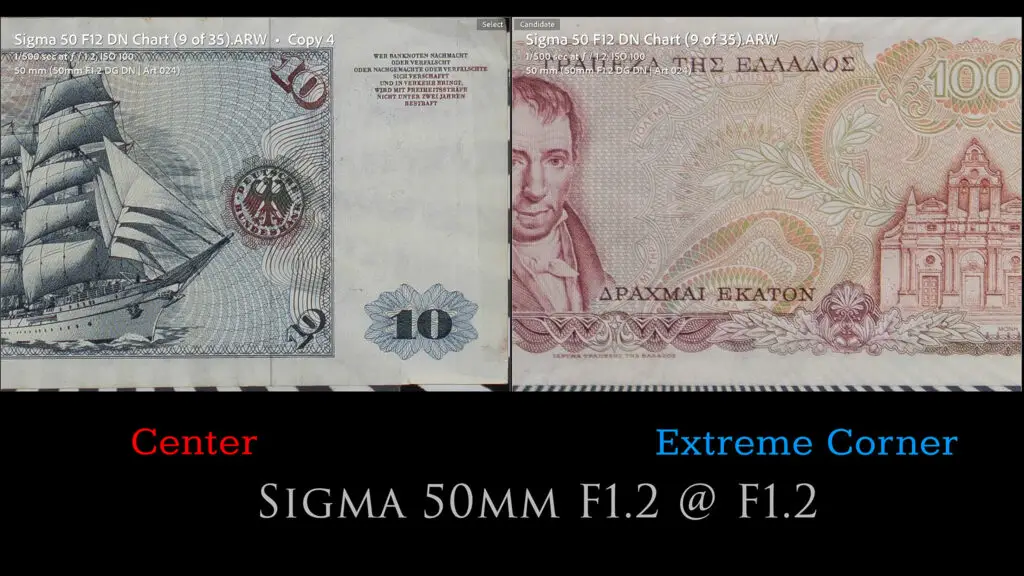
Here’s the Sony 50mm F1.2 GM at the same (the Sony was tested on the Alpha 1, which is 50MP, so the “magnification” looks a little lower.
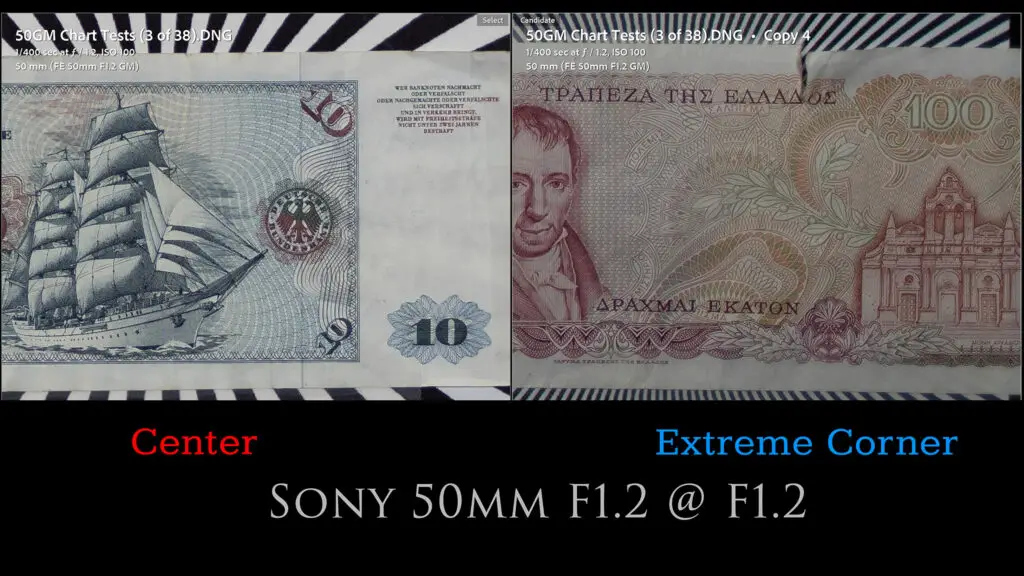
Comparing these side by side, I would say that the Sigma has the edge in the center while the GM is better in the corners.
Here’s the Sigma 50mm F1.4 DN (also tested on the Alpha 1):

As the MTF comparison earlier shows, the F1.2 lens is better in the center and midframe while the F1.4 lens is a little better in the corners. I think that most portrait photographers would prefer the sharpness profile of the F1.2 lens, as its best performance relative the competition comes in the rule of thirds zone.
Finally, the Sony FE 50mm F1.4 GM:
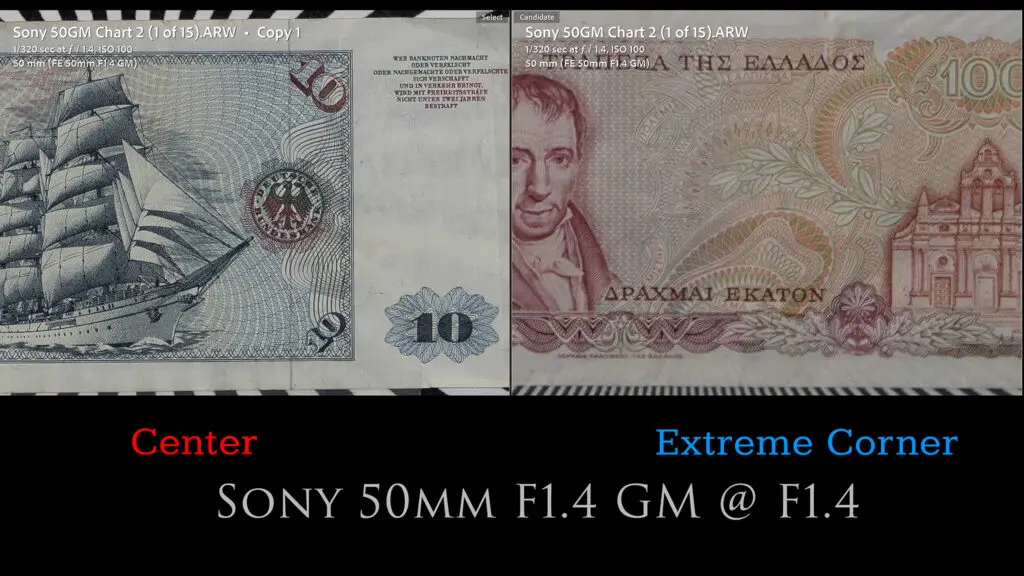
This is the most apples to apples comparison, as the 50mm F1.4 GM was also tested on the higher resolution point. The F1.4 GM is the sharpest of any of these lenses in center of the frame (and mid-frame), though the Sigma 50mm F1.2 is better in the corners. This remains true if I stop the Sigma down to F1.4 to match the maximum aperture of the GM.
Bottom line: the Sigma 50mm F1.2 GM is competitive with the very sharpest of 50mm lenses available. There’s plenty of sharpness here to even shoot landscape distant images at F1.2, though you’ll probably need either a camera with an extremely fast shutter speed (like the electronic shutter on my Alpha 1 here – 1/10,000th second) or some kind of filter to reduce light.



Stopping down to F1.4 produces little change, but I see a bigger jump at F1.8:

Corners take this kind of leap at F2, where they start to look impressive, though it is at F2.8 that they achieve a sharpness many lenses never achieve in the center of the frame:

Performs peaks at F5.6, with a mild regression at F8 due to the beginning effects of diffraction. That softness will increase at F11 and then peak at F16, which looks softer than any other aperture value due to diffraction.

So no surprises here. Sigma excels at producing very sharp, well corrected lenses, and that’s what we find here. Where I was more interested in seeing what Sigma could do was in the bokeh department. My typical experience with Sigma lenses is that they tend to err on the side of corrections rather than having a few imperfections that lead to more “magical” rendering. I felt like the 50mm F1.2 GM was rather exceptional in this regard, as it is both very sharp but also has very beautiful, creamy bokeh. I love the overall package of the Sony FE 50mm F1.4 GM (I own one), but I do feel the bokeh/rendering from the F1.2 GM is top notch.
As expected, the Sigma does a very, very good, but not exceptional job in the rendering department.
Bright specular highlights are fairly clean, with no concentric circles (AKA “onion bokeh”):

Close results with slightly busier backgrounds are soft, though expect a little more outlining than on the GM lens.

Up close with clean backgrounds will look pretty creamy, like this shot of the sweet new Zhiyun Molus XC60:
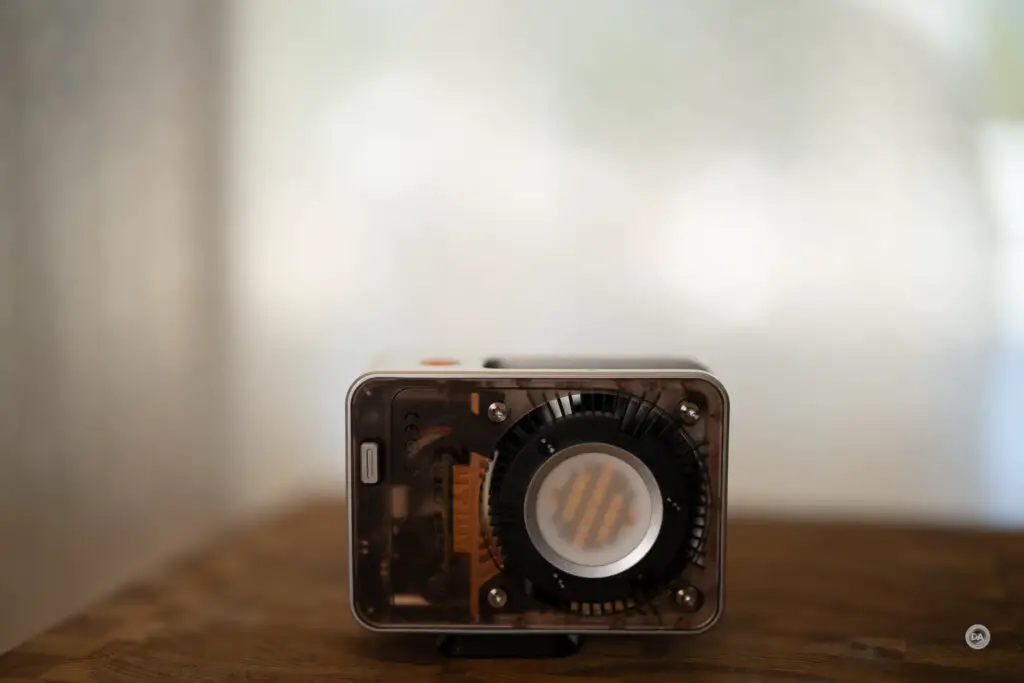
Medium distance shots will show a bit more of those edges, but also show good subject separation and contrast.

On the day that I was able to set up a quick portrait shoot the light was fairly harsh, so I don’t want to draw too many bokeh conclusions. I loved the sharpness on my model (fantastic!), but I did find the backgrounds weren’t quit as soft as what I would like.

While I didn’t have the F1.2 GM lens on hand (the more obvious comparison), I did have the Sony 50mm F1.4 GM, and it is actually more similar in price. Comparing the bokeh side by side from these two lenses, I would say that the Sigma F1.2 lens offers slightly softer bokeh:
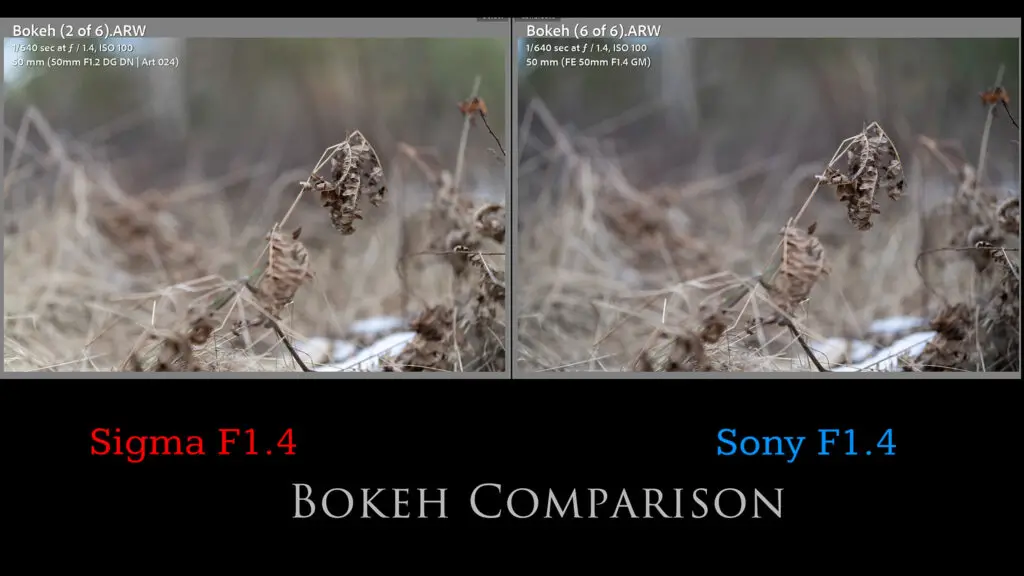
I was actually surprised by this comparison, however, as after shooting with the Sony for a year, I would say I actually prefer the Sony’s rendering (color + bokeh) in real world use. But bokeh is subjective, and I suspect that most people will be happy with what the Sigma provides.
In general I found the colors from the Sigma 50mm F1.2 DN very nice:



Flare resistance is also solid. Wide open there is little in terms of ghosting artifacts or veiling, though you’ll see a mild flare pattern when the lens is stopped down to smaller apertures (F11 examples shown here).
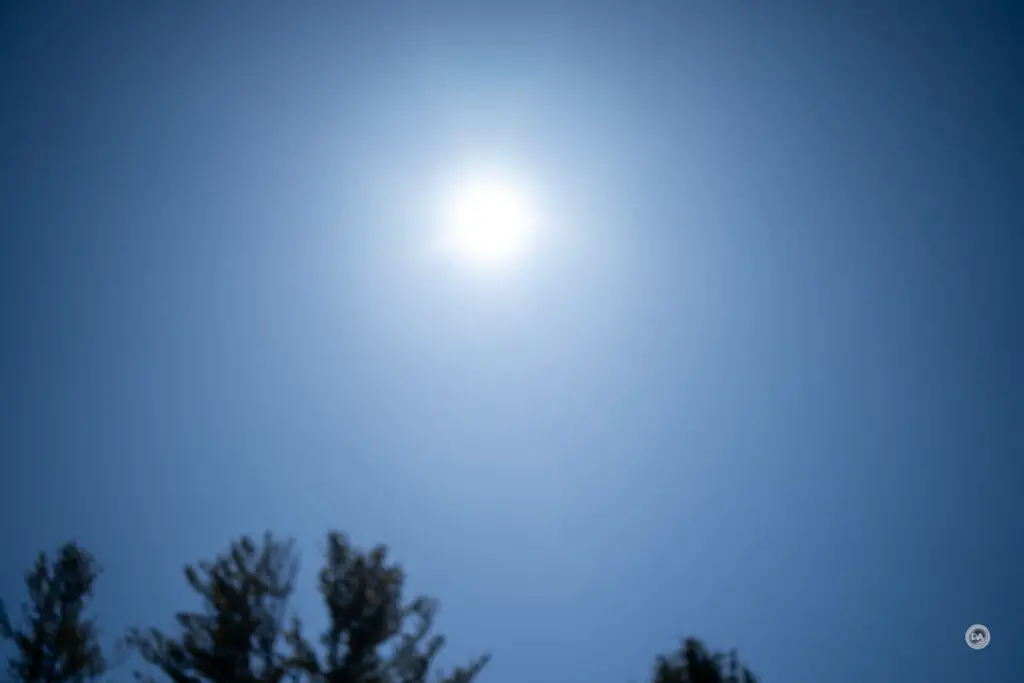

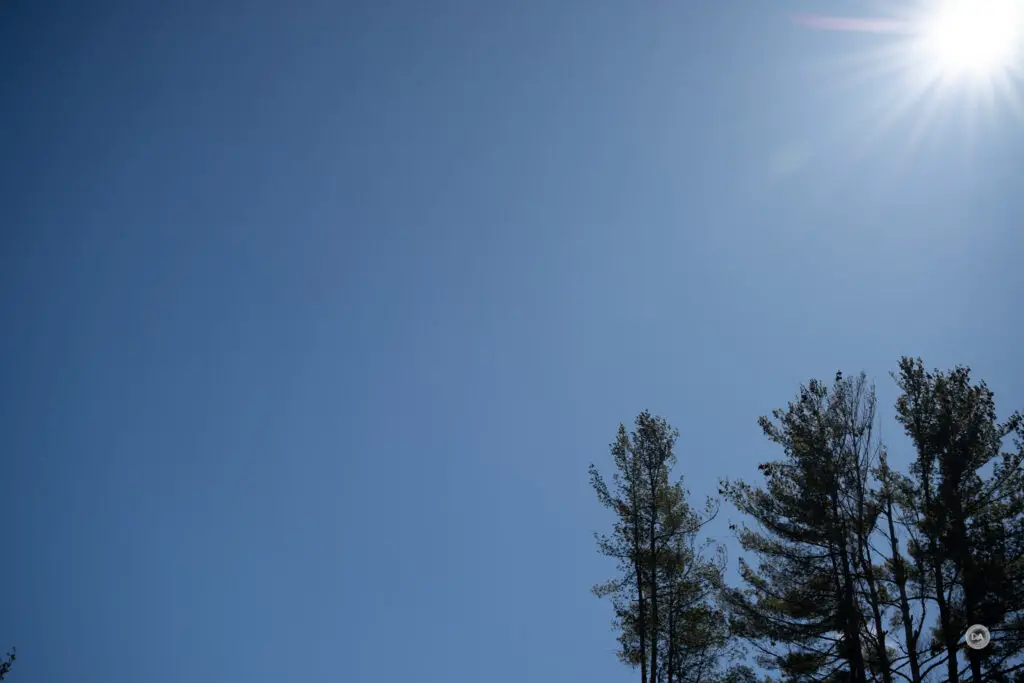
In short, there are no real optical flaws here. While I would argue that the Sony 50mm F1.2 G Master has a little nicer rendering, that is more of a gut impression and would be hard to demonstrate. The fact that this Sigma 50mm F1.2 DN has all the features, a similar optical performance, and great autofocus – all for $600 less – is going to make this a very compelling lens for the photographers who want that extra little bit that F1.2 provides but don’t want to spend $2000 to get it.

If you want to see more photos, check out the image gallery here.
Conclusion
The Sigma 50mm F1.2 DG DN | ART is a great accomplishment for Sigma, as they have managed to give us all of the strengths of their optically excellent 35mm F1.2 DN while managing to keep the size and weight done. The fact that the lens has outstanding autofocus is just another feather in its cap. This is the kind of lens that gives Sony E and Leica L a real advantage over platforms like Canon RF and Nikon Z (at least for now). The Canon RF 50mm F1.2L is a beautiful lens, but it also costs $2300 and is bigger and heavier than the Sigma. The Nikon Z 50mm F1.2 S retails for $2100 but is bigger and heavier still (it weighs nearly 1100g and is 150mm long!). Sigma has always done an admirable job of filling this role, providing mostly similar alternatives to the premium first party lenses at a much lower price point. The fact that Sony has this as an option and Canon/Nikon do not remains a core advantage for Sony in the mirrorless wars.

I found the smaller packaging of the Sony FE 50mm F1.4 GM when it was released more appealing than Sigma’s larger 50mm F1.4 DN, but they’ve done a great job of eliminating that as an advantage relative to the slightly larger Sony 50mm F1.2. In some ways the 50mm F1.4 GM will be a more direct competitor to the Sigma as it runs $1299 USD, just $100 less than the Sigma 50mm F1.2 DN’s price tag of $1399 USD. Both lenses are very appealing, but I think some will look at the advantages of that F1.2 aperture and choose the Sigma. The list of defects on the Sigma is extremely low, but I would (subjectively) say that I slightly prefer the rendering/bokeh of the 50mm F1.4 GM and even more the 50mm F1.2 GM.

Sigma has been a prodigious lens producer on Sony and L-mount, and they now have a 50mm lens for every need. Want a smaller, lighter option? You’ve got the 50mm F2 DN. Want a premium yet affordable option? There’s the 50mm F1.4 DN at just $849 USD. Want the fastest autofocus option at 50mm for those shallow depth of field portraits and special low light situations? Now we have the 50mm F1.2 DN at $1399 USD. Talk about being spoiled for choice!
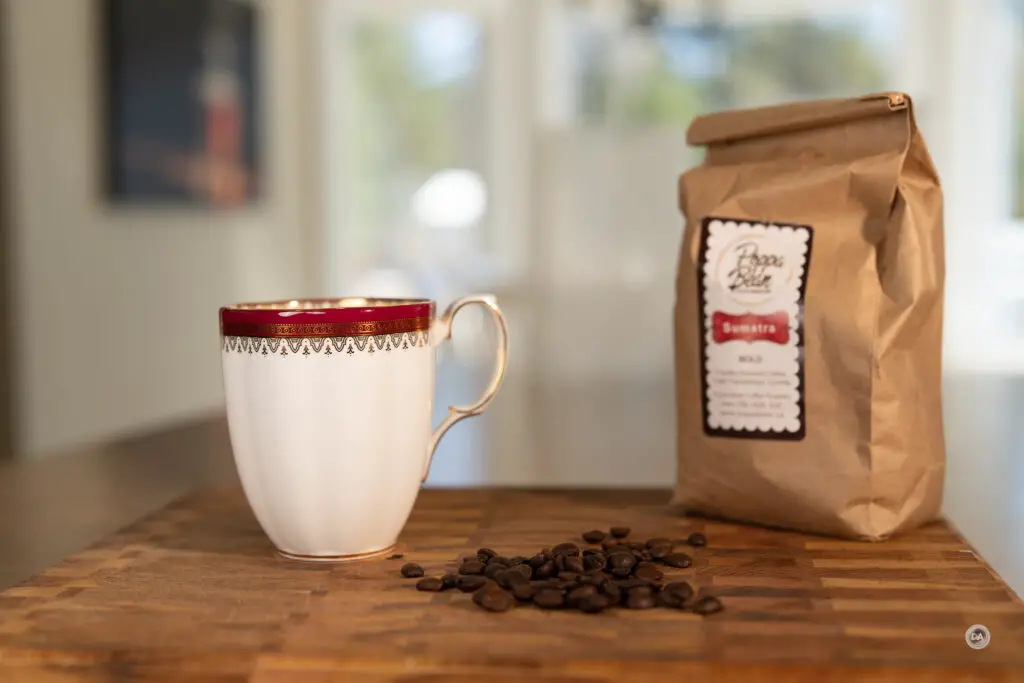
Pros:
- Extremely well built lens
- Thorough weather sealing
- A long list of a features
- Includes lens case
- Slightly lighter than the GM lens
- Dual HLA motors make for snappy, silent autofocus
- Good focus accuracy for portrait work
- Good video AF performance
- Fairly low focus breathing
- Competitive sharpness with the very best 50mm lenses from F1.2 on
- Excellent control of chromatic aberrations
- Low distortion and moderate vignette
- Solid flare resistance
- Smooth bokeh
- Much cheaper than first party 50mm F1.2 options
Cons:
- Bokeh not as creamy as the GM lens
_________________________________________________________________________
GEAR USED:
Purchase the Sigma 50mm F1.2 DN @ B&H Photo | Adorama | Nuzira | Amazon | Camera Canada | Amazon Canada | Amazon UK | Amazon Germany
___________________________________________________________________
Purchase the Sony a7RV @ B&H Photo | Adorama | Amazon | Camera Canada | Sony Canada | Amazon Canada | Amazon UK | Amazon Germany
__________________________________________________________________
Purchase the Sony a7IV @ B&H Photo | Adorama | Amazon | Camera Canada | Sony Canada | Amazon Canada | Amazon UK | Amazon Germany
_________________________________________________________________
Purchase the Sony Alpha 1 @ Camera Canada | B&H Photo | Adorama | Amazon | Sony Canada | Amazon Canada | Amazon UK | Amazon Germany | Ebay
_________________________________________________________________
Want to support this channel? Use these affiliate links to shop at: B&H Photo | Amazon | Adorama | Camera Canada | Amazon Canada | Amazon UK | Ebay | Make a donation via Paypal
Buy DA Merchandise https://bit.ly/TWIMerch
Keywords: Sigma 50mm F1.2, Sigma 50mm DN, 50mm, F1.2, f/1.2, #SIGMA, #SIGMA50mmF12Art, #SIGMAArt, #SIGMADGDN, Full Frame, Review, G Master, GM, Sony Alpha 1, Sony a7RV, Review, Hands On, Dustin Abbott, Real World, Comparison, Sharpness, Bokeh, Flare Resistance, Autofocus, Image Quality, Sample Images, Video, Photography, let the light in, weathersealing, #letthelightin, DA
DISCLAIMER: This article and description contains affiliate links, which means that if you click on one of the product links, I’ll receive a small commission. As an Amazon Associate I earn from qualifying purchases.










 Sirui Sniper 75mm F1.2 Review
Sirui Sniper 75mm F1.2 Review  Sirui Sniper 75mm F1.2 Gallery
Sirui Sniper 75mm F1.2 Gallery  Tamron 70-300mm F4.5-6.3 RXD Z-mount Review
Tamron 70-300mm F4.5-6.3 RXD Z-mount Review  Nikkor Z 40mm F2 Review
Nikkor Z 40mm F2 Review 





